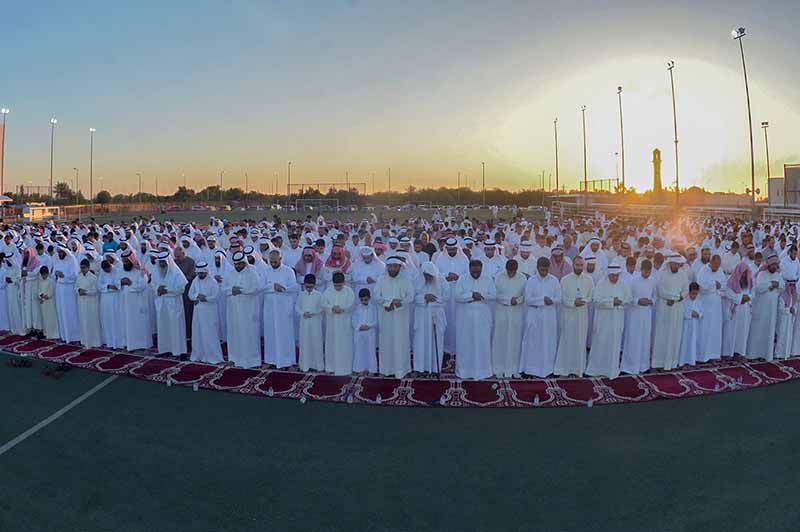The Kuwaiti people celebrate Eid Al-Adha with diverse rituals and customarily practices namely sacrificial sheep slaughter, a tradition from which “eid al-lahm” (the meat eid) derives.
Families prepare for pilgrims’ return from sacred sites in Saudi Arabia, eager to receive gifts from Makkah and Medina and prepare dinners in honor for the gathering with their loved ones, said Saleh Al-Mesbah, a historian and chronicler of the Kuwaiti heritage in an interview with Kuwait News Agency (KUNA).
Kuwaitis, like many Muslims elsewhere in the world, slaughter sheep (or other cattle) immediately after prayers, early in the morning. Particularly in the past, they used to do the ritual in the house courtyard, witnessed by family members.
Father of the family, particularly in the old times, himself slaughters the sheep. Aided by relatives, he skins it and distributes the meat to relatives, neighbors and the poor. With no fridges to preserve perishables, the family retains third of the livestock and cook it totally for a celebratory lunch.
A neighborhood (Al-Fereej in Kuwaiti dialect) used to comprise 20-25 households. An average of four-five houses would witness eid slaughter. In case they chose a cow or a camel for the ceremony, a butcher would do the job, Al-Mesbah said.
Family members gather at the eldest house for the eid breakfast that contains cooked beans (locally known as bajella), chickpea (nekhi), regag (homemade bread) and some popular sweets such as darabil. Households used to fry the livestock liver to be offered at pre-noon time, and serve the slaughtered meat with rice for lunch.
The Kuwaitis, in the past, used to take a weeklong eid holiday. Every day, men perform Al-Ardha (a folkloric dance), brandishing rifles and swords while chanting. At the playgrounds, children experience enjoyable time with swings and other traditional games amid loud singing.
They spend their eid pocket money on buying sweets and fireworks. Not only parents would grant them some money to celebrate the occasion, but neighbors would do so too. Households clean up the houses on the eid eve. Early in the eid morning, they sprinkle the house with rose water or fragrance and fill the air with bukhoor. The women dye their hair with henna, color their feet and hands with the red substance.
Al-Adha eid was also an occasion to wear new clothes, and families used to install a red, green or white flag atop the house as a mark that a member performed pilgrimage. A pilgrim who returned early would assure pilgrims’ families about their loved ones safety in the holy places and inform them about time of their expected return. He would be rewarded with gifts, money or food. – KUNA

